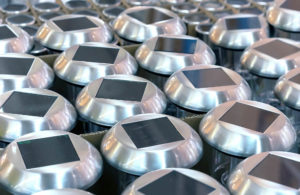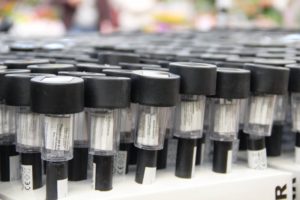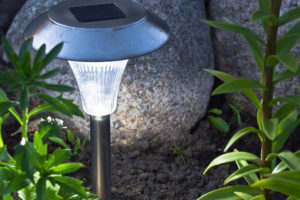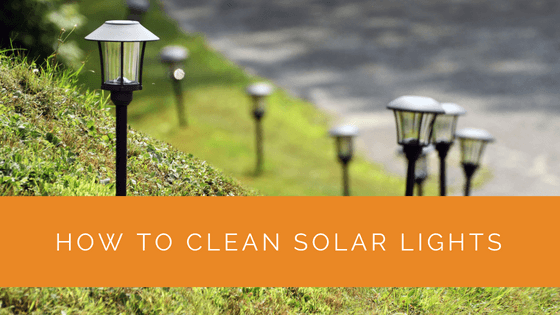Solar lights have become a popular and eco-friendly choice for illuminating outdoor spaces. Harnessing the sun’s power, these lights provide an efficient and sustainable lighting source for your backyard or patio. However, to ensure their effectiveness, it’s crucial to keep them clean and well-maintained. In this article, we’ll guide you through cleaning solar lights, providing valuable tips and techniques to maximise their performance and extend their lifespan.
Contents
- 1 Key Takeaways
- 2 What Are Solar Lights?
- 3 What To Use To Clean The Solar Lights?
- 4 How To Clean The Solar Lights?
- 5 Examples of Solar Lights
- 6 Case Study: Enhancing Solar Light Efficiency Through Proper Cleaning and Maintenance
- 7 Expert Insights on Cleaning Solar Lights
- 8 Our Expertise in Solar Lights
- 9 Wrapping Up
Key Takeaways
- Solar lights draw power from the sun and use batteries to illuminate outdoor spaces. Regular cleaning is essential to maintain their efficiency.
- You can use tools such as a damp cloth with soapy water, dish soap, a soft brush, fine grit sandpaper, and even nail polish remover for specific cleaning needs to clean solar lights.
- A step-by-step cleaning process involves preparing soapy water, cleaning the top cover, the fixture, the solar cell, and cloudy panels, and checking and cleaning battery terminals. Regular cleaning can improve solar panel efficiency.
What Are Solar Lights?
Solar lights are solar lamps or lanterns that draw power from the sun. Unlike regular lights, which require electricity, these are solar-powered. Essentially, they use batteries that get charged with the sun’s power. It stores solar energy and converts it to electricity to illuminate your backyard or patio.
Daylight is crucial for solar lights as they use it to charge completely and give you light at night.
Often, the charging capability gets affected due to rain, snow, and lack of sunlight. Due to dirt, dust, grime, and bird droppings, unclean solar panels also contribute to a lack of sun exposure. That’s why you must clean your solar lights.

What To Use To Clean The Solar Lights?
Cleaning solar lights is a must to improve their efficacy. However, there is a methodology and select tools to clean them successfully. Below are the tools you can use to clean your solar panels:
Damp Cloth
You can use a damp cloth to wipe the solar lights and panels. However, it would be best to have a handy dry cloth to wipe the solar lights dry after wiping them with soapy water and a damp cloth. The dry cloth is necessary to prevent any damage to the solar-powered lights due to water.
Dish Soap
Dish soap or soapy water will help loosen the dirt on the surface of the solar lights and panels. You can then easily wipe it clean. Ideally, using a regular dishwashing liquid would be best as it has fewer chemicals and will not damage the solar lights’ electric components.
Soft Brush Or Fine Grit Sandpaper
At times, your solar light might have accumulated dirt and debris that might be difficult to remove with a damp cloth or sponge. Also, the light might have stubborn dust. You might use a soft brush and fine-grit sandpaper to scrub off the difficult-to-remove dirt. The bonus is that the soft brush will help you reach the narrow crevices of the solar cell.
Nail Polish Remover
When the surface of the solar panel and light becomes white, exposure to sunlight reduces. You can use a ball of cotton wool with a bit of nail polish remover to clean the white cast. Your solar lights will shine brightly and get exposure to the sun properly.

How To Clean The Solar Lights?
Once you know the tools required to clean your solar panels, you need to follow a step-by-step process to clean the solar lights. Also, cleaning your solar lights in the evening or early morning when the sun goes down would be best. Otherwise, you will find the lights too hot to handle.
Following are the steps for cleaning the solar lights:
Step 1: Prepare the Soapy water
Firstly, make your soapy water ready to loosen the dirt and grime. Mix ½ teaspoon of dish soap, ¼ cup of vinegar, and 2 cups of water. This is a gentle yet effective solution to clean your panels.
Step 2: Clean the Top Cover
Next, you should remove the top cover from the solar light. You can use a damp cloth, sponge, and soapy water to wipe the top cover. Then, wash it with plain water to eliminate soap residue without letting water on the lid. After that, wipe it dry with a dry cloth and leave it in the sun.
Step 3: Cleaning the Solar Light Fixture
You can start cleaning the solar light fixture with a sponge or damp cloth. Ensure you use light pressure when cleaning the fixture to avoid damaging the solar panel. Once you clean it, ensure you wash it with water and wipe it dry.

Step 4: Cleaning the Solar Cell
For cleaning the solar cell, first, tape the solar cell to protect the plastic and metal parts from getting scuffed. Then, use fine grit sandpaper, a soft brush, and soapy water with low pressure to wipe the grease and dirt on the solar cell. Use a little alcohol or nail polish remover to remove leftover oil and dirt on the cell.
Step 5: Cleaning the Cloudy Panels
Next, clean the cloudy panels with a cotton ball and nail polish remover. Alternatively, you can spray a clear coat on the solar panels with an overspray protector. This will remove the clouded portions and make your solar panels brighter.
Step 6: Cleaning the Battery Terminals
Finally, you must check the battery for any white dust. Suppose you find that your battery is facing corrosion. So, use sandpaper and a brush to remove the white dust from the terminals and the battery.
Also, check if the batteries need to be replaced. Generally, the battery lasts for 3-4 years. Nevertheless, it’s good to double-check to improve the solar light’s efficacy.
Examples of Solar Lights
- Solar Garden Lights: https://www.solarpanelsnetwork.com/blog/best-solar-garden-lights/
- Solar Security Lights: https://www.solarpanelsnetwork.com/blog/best-solar-security-lights/
- Solar Fence Lights: https://www.solarpanelsnetwork.com/blog/best-solar-fence-lights/
- Solar Wall Lights: https://www.solarpanelsnetwork.com/blog/best-solar-wall-lights/
- Solar Indoor Lights: https://www.solarpanelsnetwork.com/blog/best-solar-indoor-lights/
- Solar String Lights: https://www.solarpanelsnetwork.com/blog/best-solar-string-lights/
- Solar Path Lights: https://www.solarpanelsnetwork.com/blog/best-solar-path-lights/
Case Study: Enhancing Solar Light Efficiency Through Proper Cleaning and Maintenance
Background
A community garden in a suburban area installed solar lights to illuminate its pathways and common areas. Over time, the garden’s management noticed a decline in the brightness and overall performance of the solar lights. The lights were not lasting through the night, affecting the safety and aesthetics of the garden.
Project Overview
The garden’s management decided to investigate the cause of the reduced light performance. They sought assistance from a solar maintenance expert to diagnose and resolve the issue. The primary goal was to restore the lights to their optimal performance by implementing a regular cleaning and maintenance routine.
Implementation
- Initial Inspection and Diagnosis: The expert conducted a thorough inspection of the solar lights, focusing on the solar panels, light fixtures, and battery compartments. It was found that the solar panels were covered with a significant amount of dirt and debris, and some panels exhibited a cloudy appearance. Additionally, several battery terminals showed signs of corrosion.
- Cleaning and Maintenance Process:
- Preparation of Cleaning Solutions: A mild soapy solution was prepared using dish soap, vinegar, and water. This solution was chosen for its effectiveness in removing dirt without damaging the solar panels.
- Cleaning Solar Panels and Fixtures: The team used soft, damp cloths and sponges to gently clean the solar panels and fixtures. For areas with stubborn dirt, a soft brush was used. The panels were thoroughly rinsed and dried to prevent water damage.
- Addressing Cloudy Panels: Panels with a cloudy appearance were treated with a cotton ball dipped in nail polish remover. This restored the clarity of the panels, allowing more sunlight to reach the photovoltaic cells.
- Battery Terminal Maintenance: Corroded battery terminals were cleaned using fine grit sandpaper and a brush. This step was crucial in ensuring a good electrical connection and preventing further corrosion.
- Final Checks and Adjustments: After cleaning, all components were inspected for damage. The solar lights were then reassembled, and the angle of the panels was adjusted to maximise sunlight exposure during the day.
Results
Following the cleaning and maintenance routine, the solar lights in the community garden showed a marked improvement in performance. The lights were noticeably brighter and lasted longer into the night. The management observed that the garden was well-lit, enhancing safety and the garden’s overall appearance. The maintenance routine was established as a regular practice, scheduled every few months to ensure continued efficiency.
Summary
Proper cleaning and maintenance are critical for the optimal performance of solar lights. This case study highlights how addressing issues such as dirt buildup, cloudy panels, and corroded terminals can significantly enhance the efficiency and longevity of solar lights. Regular maintenance not only improves the functionality of the lights but also ensures safety and better illumination.
At Solar Panels Network, we offer expert guidance and services for maintaining solar lighting systems. Our team is dedicated to helping you get the most out of your solar investments, ensuring they provide sustainable and reliable lighting solutions.
Expert Insights on Cleaning Solar Lights
Keeping your solar lights clean is essential for maintaining their efficiency and longevity. A gentle cleaning routine using the right materials can prevent dirt buildup, which can significantly reduce the lights’ ability to charge during the day.
Lead Solar Technician
Many people overlook the importance of cleaning the battery terminals. Corroded terminals can hinder the performance of your solar lights. Regularly checking and cleaning these terminals can ensure a steady and reliable light output.
Electrical Engineer
Using gentle, non-abrasive cleaning methods is crucial to avoid damaging the solar panels. Avoid harsh chemicals and always opt for mild solutions like soapy water. Proper maintenance can extend the life of your solar lights significantly.
Solar Maintenance Specialist
Our Expertise in Solar Lights
At Solar Panels Network, we’re here to provide you with valuable information and support regarding solar lighting. With our experience and understanding of the solar lighting industry, our team of experts is prepared to assist you in finding the right lighting solution for your needs. Whether you’re interested in improving your outdoor spaces, conserving energy, or adopting a more sustainable approach, we’re well-equipped to help. Please feel free to contact us with any questions or inquiries.
Wrapping Up
You can increase the efficiency of your solar panels by merely by cleaning them. It is essential to clean your solar panels as they might accumulate dirt and debris. In such cases, you will find that your solar-powered outdoor lights are hazy and faded.
So, it would be best to clean the solar lights in the evening or early morning when it is not hot. Use a damp cloth, soapy water, and nail polish remover to clean the surface of solar lights. You can also use a soft brush or fine-grit sandpaper to remove stubborn marks.
Ensure you have excellent illumination with clean solar lights by following the tips in this article.
About the Author
Solar Panels Network stands at the forefront of solar energy solutions, driven by a team of seasoned solar engineers and energy consultants. With over decades of experience in delivering high-quality solar installations and maintenance, we are committed to promoting sustainable energy through customer-centric, tailored solutions. Our articles reflect this commitment, crafted collaboratively by experts to provide accurate, up-to-date insights into solar technology, ensuring our readers are well-informed and empowered in their solar energy decisions.

